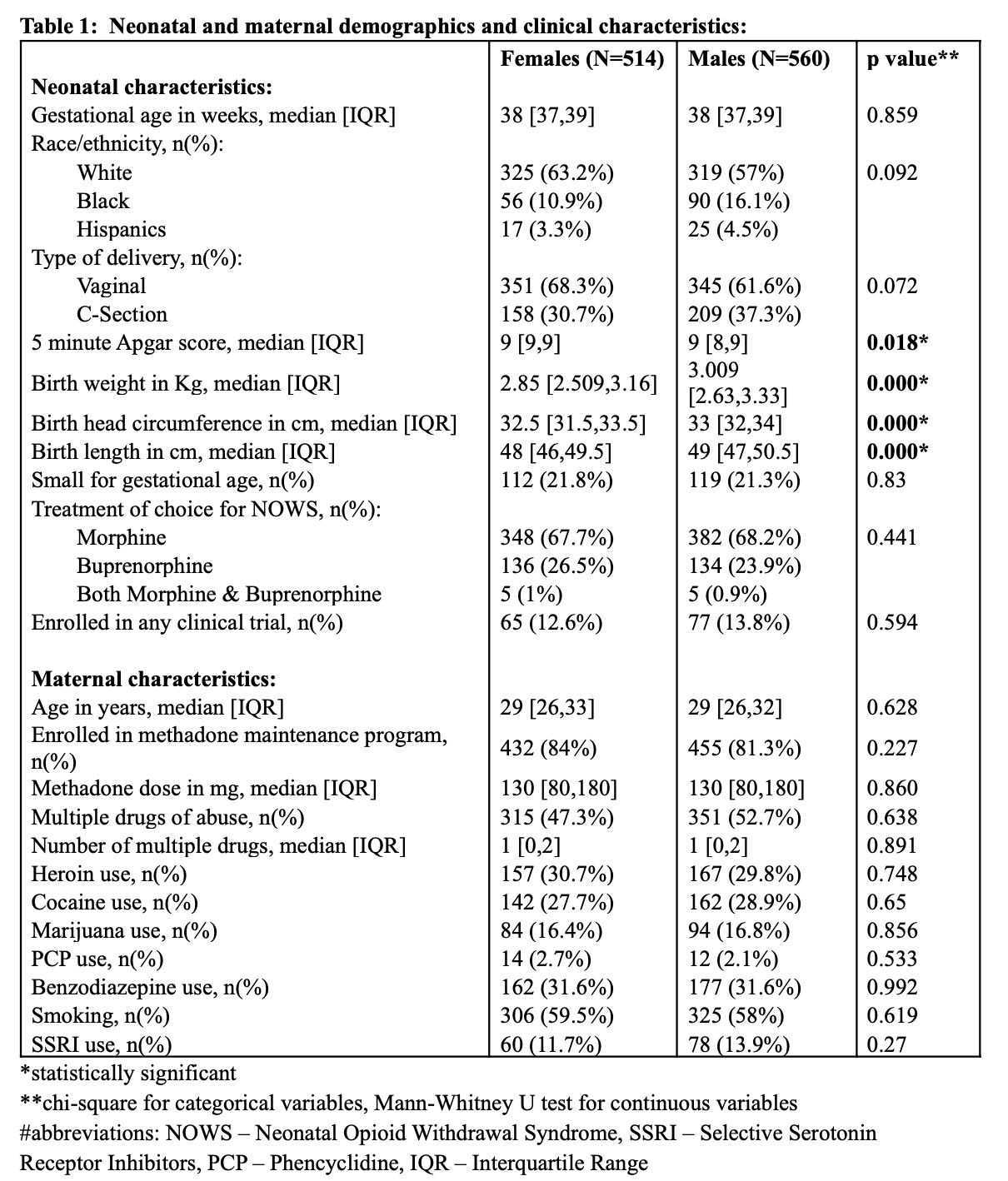Neonatal General
Neonatal General 9: NOWS and Other Exposures
197 - Are there sex-related differences in the severity of Neonatal Opioid Withdrawal Syndrome?
Sunday, April 30, 2023
3:30 PM - 6:00 PM ET
Poster Number: 197
Publication Number: 197.333
Publication Number: 197.333
Victoria Anderson, Sidney Kimmel Medical College at Thomas Jefferson University, Moorestown, NJ, United States; Saminathan Anbalagan, NemoursAlfred I. duPont Hospital for Children, Wilmington, DE, United States; Daniela Stark, Hassenfeld Children's Hospital at NYU Langone, New York, NY, United States; Michael T. Favara, Sidney Kimmel Medical College at Thomas Jefferson University, MEDIA, PA, United States; David Carola, Sidney Kimmel Medical College at Thomas Jefferson University, Philadelphia, PA, United States; Kolawole O. Solarin, NemoursAlfred I. duPont Hospital for Children/Thomas Jefferson University Hospital, Philadelphia, PA, United States; Susan Adeniyi-Jones, Sidney Kimmel Medical College at Thomas Jefferson University, Wynnewood, PA, United States; Zubair Aghai, Sidney Kimmel Medical College at Thomas Jefferson University, Philadelphia, PA, United States
.jpg)
Victoria Anderson, MS (she/her/hers)
Medical Student
Sidney Kimmel Medical College at Thomas Jefferson University
Moorestown, New Jersey, United States
Presenting Author(s)
Background: Factors associated with development and symptomatology of Neonatal Opioid Withdrawal Syndrome (NOWS) are poorly understood. There are conflicting data on effects of infant’s sex on NOWS. Some studies have suggested infant sex to play a role in predicting NOWS severity and adverse outcomes, with male infants being at an increased vulnerability (O’Connor 2013, Charles MK, 2017).
Objective: To analyze if infant sex is associated with severity of NOWS.
Design/Methods: This is a retrospective analysis of term and late-preterm infants (≥35 weeks gestation) exposed to in-utero opioids, born between September 2006 and August 2022, who required pharmacologic treatment for NOWS. Indicators of the severity of NOWS (duration of medical treatment, duration of hospitalization, use of secondary medications) were compared between male and female infants. Statistical analyses including Chi-square, Mann-Whitney U, linear and logistic regressions were performed to establish whether there were differences in severity of NOWS among male and female infants.
Results: A total of 1074 infants were included in the study, 514 (47.9%) female and 560 (52.1%) male. There was no significant difference in demographic and baseline clinical characteristics in two groups except for anthropometry (birth weight, head circumference and length) and Apgar score at 5 minutes (Table 1). Median duration of medical treatment (25 days vs. 23 days, p= 0.573), length of hospital stay (31.5 days vs. 28 days, p= 0.347), use of phenobarbital (24.7% vs. 26.3%, p= 0.563), and use of clonidine (3.9% vs. 3.8%, p= 0.904) were similar in two groups (Table 2). The differences remain non-significant after adjusting for birth anthropometric measurements, gestational age, 5 minutes Apgar score, small for gestational age (SGA) status and maternal exposure to benzodiazepines.
Conclusion(s): Infant sex does not influence the severity of NOWS among those who required pharmacological treatment.

.png)
